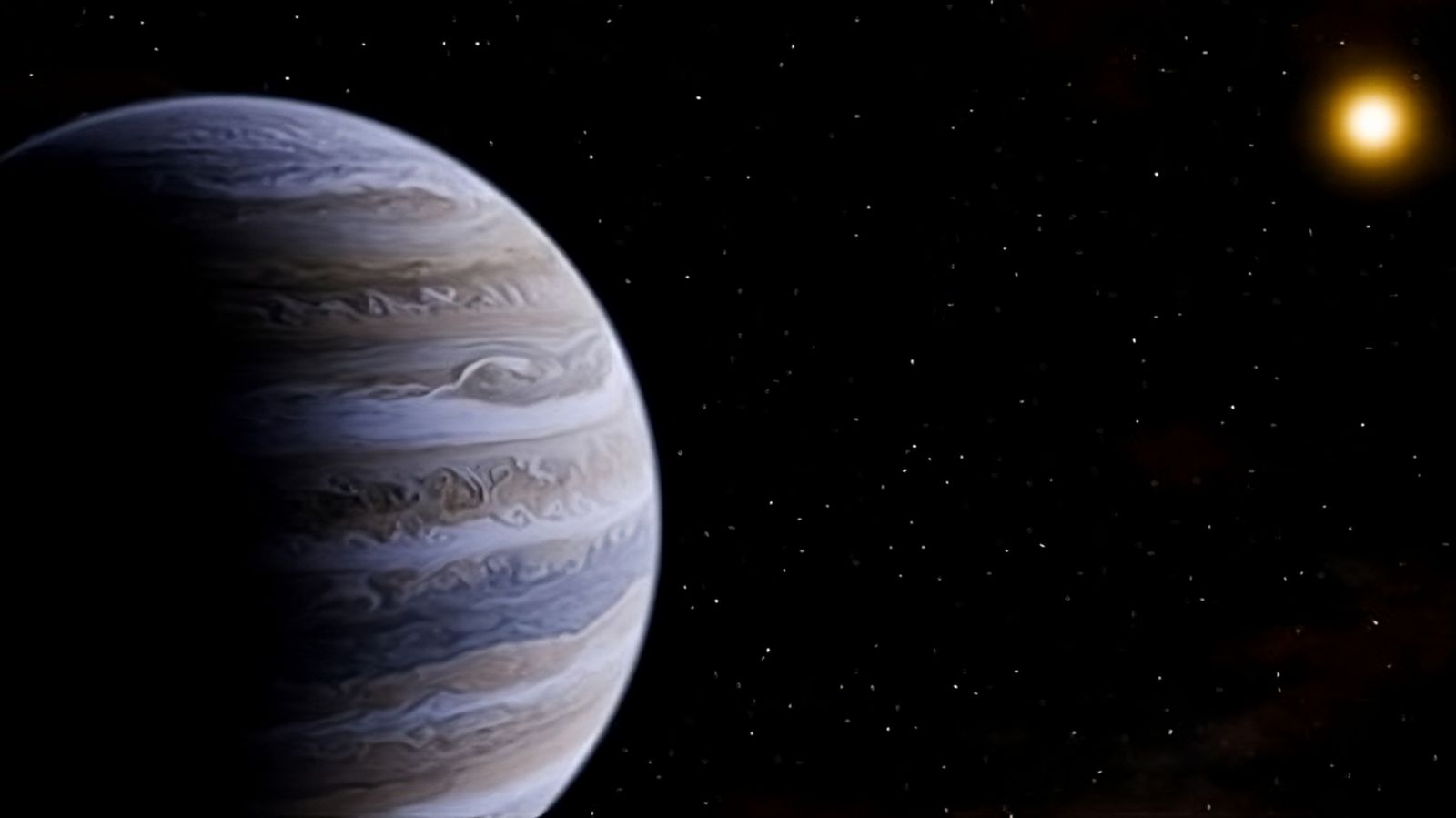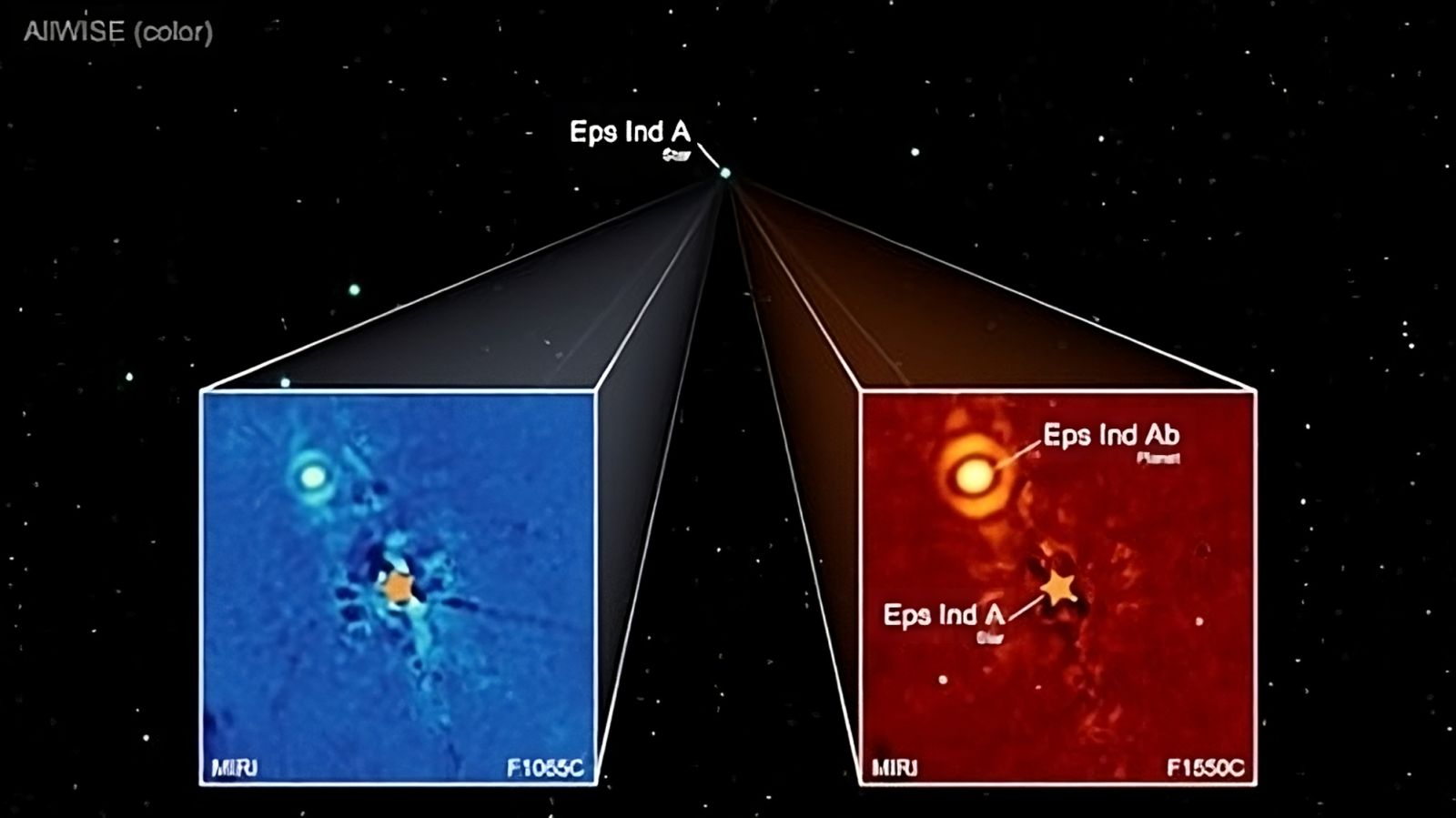Image of a temperate super-Jupiter in the neighborhood of the Solar System
Follow us on Google News (click on ☆)
Named Epsilon Indi Ab, the exoplanet orbits Eps Ind A, a star slightly smaller and cooler than our Sun but belonging to the same age classification.
To date, only a few cold gas giant planets orbiting stars of the Sun's age are known. They have all been detected indirectly through radial velocity measurements. As planets cool and contract over time, they become much less luminous and thus more challenging to image.

Artist's impression of a cold gas giant orbiting a red dwarf star.
Credit: T. Müller (MPIA/HdA)
It was indeed through the radial velocity method that the presence of Eps Ind Ab was identified, a gas giant quite similar to Jupiter, although slightly more massive. However, in prior studies based on an insufficient temporal coverage of the orbit, the exoplanet's mass and its orbital distance from its host star were underestimated.
In reality, Eps Ind Ab takes about 200 years to complete one orbit around its star. Observations spanning only a few years were therefore insufficient to determine its orbit with high precision.
To more accurately characterize the orbit of this planet, a team of astronomers led by MPIA, including two researchers from the Observatory of Paris - PSL, considered an alternative detection approach: direct imaging. This measurement was made possible thanks to the unprecedented imaging capabilities of the JWST operating in the thermal infrared.
The MIRI coronagraph, an instrument born from the expertise of the Observatory of Paris - PSL The team chose to utilize the MIRI (Mid-Infrared Instrument) camera on the JWST, equipped with a coronagraph designed and built at LESIA at the Observatory of Paris - PSL in collaboration with the CEA. Its phase mask attenuates the light from the star by creating an artificial eclipse. These observations also benefited from the "proximity" (in cosmic terms) of Eps Ind A, at just 12 light-years from Earth. The closer the star, the greater the angular separation between the star and planet on the image, reducing the contamination from the host star's light on the planet. The choice of MIRI proved excellent, as the instrument operating in the mid-infrared reveals cold and dim objects.
Why is Eps Ind Ab interesting?
This planet is one of the coldest exoplanets observed to date. With a temperature nearing zero degrees Celsius (32°F), it is much colder than the vast majority of other imaged exoplanets.

Images captured by MIRI at mid-infrared wavelengths of 10.65 (left) and 15.55 micrometers (right).
Credit: T. Müller (MPIA/HdA), E. Matthews (MPIA)
Eps Ind Ab orbits its host star Eps Ind A on an eccentric and elliptical path, with its farthest point expected to lie between 20 and 40 astronomical units. This orbit is comparable to that of Neptune around the Sun.
Direct imaging of exoplanets is particularly useful for their characterization. Scientists can directly gather their light at different wavelengths. In the case of Eps Ind Ab, the analysis was based on three available images: two from JWST/MIRI and another obtained from the ground with the VISIR instrument on the VLT.
Eps Ind Ab is less luminous than expected at shorter wavelengths. This could indicate the presence of significant amounts of heavy elements, particularly carbon, which leads to molecules such as methane, carbon dioxide, and carbon monoxide commonly found in gas giant planets. On the other hand, it could indicate that the planet has a cloudy atmosphere.
Eps Ind Ab provides a unique opportunity to study the atmospheric composition of true Solar System analogs.
This work, led by Elisabeth Matthews, a researcher at the Max Planck Institute for Astronomy in Germany, is published under the title "A temperate super-Jupiter imaged with JWST in the mid-infrared" in the journal Nature on July 24, 2024. DOI: 10.1038/s41586-024-07837-8